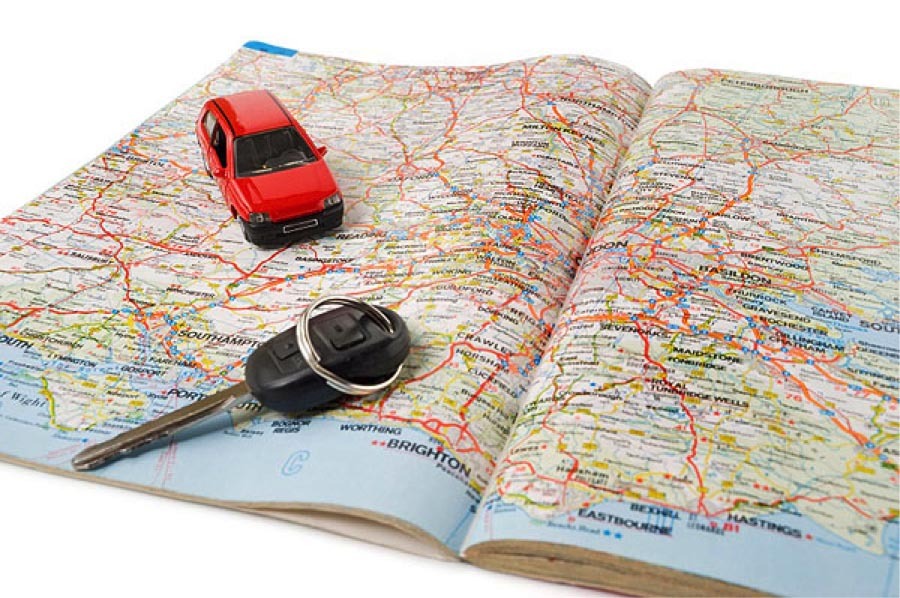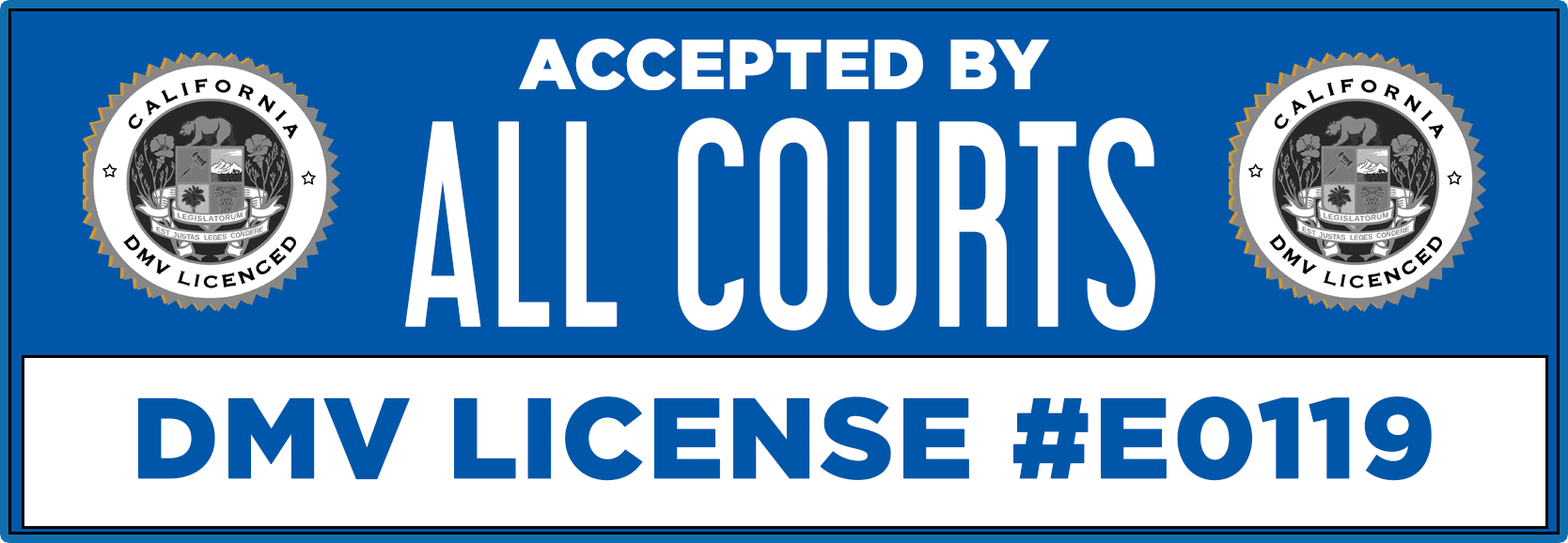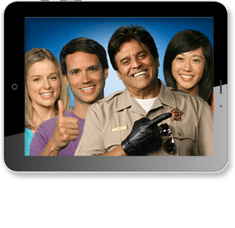How To Plan A Road Trip

Whether you have longstanding travel plans or a last minute road trip in mind, give some thought to your travel to ensure everyone arrives safely and can enjoy the trip. A little advance planning and preparation can keep you, your family and our roads safe.
Plan Your Trip
- Plan, map and estimate the duration of your driving ahead of time and let others know your plans. There are websites that offer a calculator which allows you to estimate the cost of gas for your trip.
- Expect to encounter roadwork, delays & detours – ‘Slow for the Cone Zone’
- Check road conditions, including possible road closures. Plan for heavy congestion, collisions, will chains be required for your tires if driving in snow.
- Be sure to allow yourself extra time to handle any unplanned situations that may arrive.
Prepare Your Vehicle
- Check the tires, including the spare – proper inflation and good tread can save money, time and lives.
- Inspect the engine, battery, hoses, belts and fluids for wear and proper levels. Check the A/C.
- Do a “once around” – test all the lights, wipers and clean the windows (inside and out)
- If you’re not sure of what to do, consider a quick inspection by a qualified technician. A few dollars up front can mean peace of mind and safe arrivals, as well as no costly on-the-road repairs and trip interruptions.
- Prepare an Emergency Roadside Kit, including jumper cables, a flashlight and plenty of bottled water.
Packing/Roadside Emergency Kit
As the seasons change we ought to be sure our car is prepared for them. Depending on your circumstances and location, your level of preparation may vary. You may need snow tires, new windshield wipers and fluid, anti-freeze, heater/air conditioner service, recommended scheduled tune-ups, etc. For everyone it should mean preparing your car for whatever could happen.
When preparing your car it is wise to remember to make preparations also for your family. An emergency car kit is crucial for breakdowns and unusual weather conditions. It is always good to keep essential supplies in your car in case you get stranded for a few hours or even a few days.
What should I keep in my auto emergency kit? First, you want to make sure you have the basic essentials such as water, food, and warmth. After these basics are included, then you can add other necessities such as an emergency light, first aid items, tools and other accessories.
Water: Drinkable water is of utmost importance. Most people can actually survive days without food, but your body will dehydrate without water, leading to organ failure and death. We take the abundance of water for granted when things are normal, but in an emergency it becomes critical. Water is also useful for washing wounds and for sanitation. Water can also be helpful if your car overheats. Because of the limited space in automobiles, storing water must be in small packages. Water is available in small drink boxes (8.45 oz.), in pouches (4.2 oz.) or a Deluxe Sanitation & Water Kit.
Food: If your car breaks down and you are many miles from any town or store, you will want to have food stored in your kit to make sure your body has enough energy. It is very difficult to keep food in your car because it is exposed to extreme temperatures, both hot and cold, and the food is likely to spoil. The best thing to store in your car is high Calorie Food Bars. These bars come in packages of 2400 calories and 3600 calories. They can be exposed to extreme temperatures. They have a tasty flavor that won’t leave you thirsty. The bar helps activate the salivary gland and reduce your demand on emergency water supplies. They also expand in your stomach so you feel full. Be careful that you don’t over-consume them because they are so high in calories.
Warmth: You may have plenty of food and water, but if you’re cold you’ll feel miserable. Especially in the winter, warmth is a must for an emergency car kit. If you get stranded on a desolate road or stuck in a snowstorm, you will be glad you have a source of warmth in your car. There are several options: 6 to 20 hour warm packs, wool blankets, extra clothes, emergency bags, and emergency blankets. Also, for shelter from the rain, include a poncho or other rain gear.
Warm packs are nice for quick, concentrated heat. You can put them in your pockets, shoes and gloves to stay warm.
Wool is one of nature’s warmest fibers. It provides warmth even when it’s wet. It is best to get a wool blend blanket because when synthetic fibers are added to it they provide softness, durability and are washable.
Emergency blankets and bags are lightweight and fold to pocket size. They’re made of a reflective material which reflects up to 80% of your radiant body heat to help keep you warm.
A poncho is nice if you are in rain or other bad weather and need to go outside to change a tire or do other work on the car.
Light: It’s important to always keep a flashlight in your emergency car kit. It comes in handy for all types of circumstances. Be sure to keep charged batteries in the flashlight so you aren’t left in the dark. The Innovative LED Lights have a much higher battery life than conventional flashlights and are essential for emergency car kits. Other lights that could be useful in your auto emergency kit are lightsticks, emergency candles with a wide base and waterproof matches.
Lightsticks last for 12 hours and are safe for children. They are visible up to one mile away, and they are non-toxic and non-flammable.
Emergency candles or liquid paraffin candles are long-lasting, reusable, odorless and smokeless. A wide base adds stability which helps prevent accidental spills which is especially nice for the car. Also, be sure to keep waterproof matches in your emergency car kit so you can light it.
First Aid Items: If injury occurs, every second counts because help may be hours or days away. A first aid kit allows you to assist with injuries until help arrives. Keep items such as pain relievers, sterile pads, alcohol prep pads, bandages, soap, gauze pads, and micropore tape. You may also want to include tissues, toilet paper, safety pins and ace bandages. All of these items will come in handy when you are in need of first aid on the road.
Tools: Consider tools such as a multi-purpose knife or a collapsible shovel for your car. A shovel may come in handy if you are to get stuck in the snow or mud. A multi-purpose knife provides many different tools for you to work with in a time of need. A Samurai survival tool provides an axe, hammer, and pry tool all-in-one. A basic tool kit and a roll of duct tape are also good items to keep in your car.
Other Accessories: Road flares may also be useful in your auto emergency kit, but they should only be used for a warning signal, and should NEVER be used for light. Once a road flare has been lit, make sure you set it on a non-flammable surface. The by-product from its fire drips to the ground and may cause a fire if it lands on flammable material such as grass or if there is a gas leak. Be careful because the fumes are extremely nauseous and must be used only in a well-ventilated area.
There are several kinds of pre-packaged emergency car kits available on the market, or you can customize your own. If you are purchasing a pre-packed kit remember that you may need to customize your kit according to your needs (medications, glasses, etc.) Keep your kit in a compact case so it fits easily in your trunk or under a seat.
Here are some other things to consider keeping in your car in case of an emergency:
- Spare tire, properly inflated – check every 6 months
- Car jack and lug wrench – fits your car and you know how to work it
- Preprogram your cell phone with a number for roadside service
- 12-foot jumper cables
- Four 15-minute roadside flares
- Emergency Red Reflector Triangle
- Tire pressure gauge
- Rags
- Roll of duct tape
- A HELP sign, at least 8 inches
- Extra vehicle fuses
- Small tool kit
- Heavy duty nylon bag to keep the small items together
- Nylon rope, at least 12 feet
- Plastic tarp
- Navigation aid
Nice-to-Have Extras:
- Tire inflator (such as a Fix-A-Flat)
- A quart of motor oil
- Anti-Freeze
- Spray bottle with washer fluid
- Ice scraper
- Paper Towels
- Pen and paper
- Bungee cord – 12″
- Cable ties
- Work gloves
- Small fire extinguisher (ABC rated)
Passengers/Children
- Remember that long trips can be particularly tough on your kids, especially in the heat – pack plenty of snacks and cold drinks for the road (consider freezing juice boxes or water bottles overnight).
- Use books, toys, DVDs and video games to keep children occupied and the driver focused.
- Keep children 12 and under in the back seat – it’s the safest place.
- Stopping along the drive gives everyone a chance to stretch and makes the trip easier. If you have a fussy baby, do not take them out of their car seat while driving to soothe or provide a bottle. If your child needs that level of attention, pull over in a safe place, such as a rest stop.
Focus on the Road
- Don’t text or talk on your cell phone while driving – even hands-free. If you need to make a call, check road or weather conditions or respond to a text, wait until you stop in safe place, such as a rest stop or parking lot.
- Don’t program your mobile GPS while you are driving. Either have a passenger do it or stop in a safe place.
- Share the driving with other passengers to avoid fatigue.
- Rest – driving while drowsy can be fatal. Even a 30 minute nap can help.
- Schedule your trip to allow for frequent breaks. Take time to pull over at rest stops to stretch your legs and focus your head.
- Stop for food or beverages. Avoid eating while driving.
Don’t fall into the trap of driving while angry – aggressive driving kills.
When you enroll in a traffic school program, you will learn about the topics mentioned above and more. A motor vehicle can be a safe mode of transportation, or it can be a very dangerous weapon. If you want to learn how to increase the chances of making it to your destination in one piece, complete our traffic school online today. The program is ComedyTrafficSchool.com. Take online traffic school the fun way with our award winning course. Our traffic school course is the perfect choice for anyone who recently received a traffic ticket; keep points masked from your driving record, your auto insurance rates low and become a better, safer driver!





